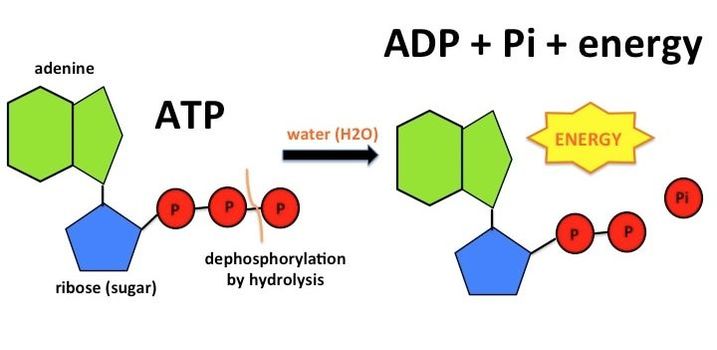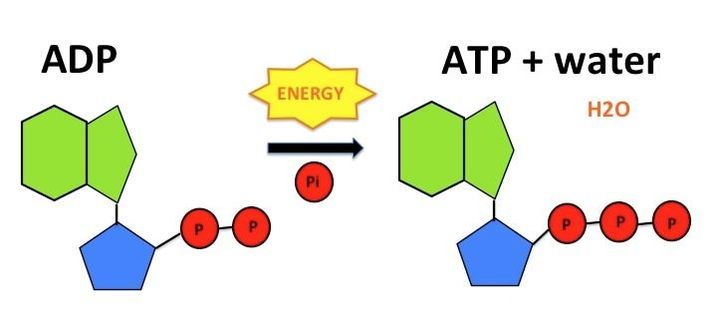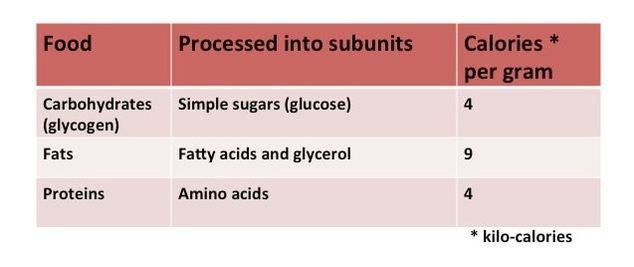| scientific_writing_for_blog.pptx |
writing a scientific manuscript for peer review (with tips for non-english native speakers)6/17/2017 I just came back from a vivax malaria meeting in Manaus, Brazil, in which I was a co-instructor in a "scientific writing and publishing" course. What follows is a ppt presentation I used, with some tips towards the end specific for non-English native speakers (romance languages mostly).
1 Comment
Although not the sole source, adenosine triphosphate (ATP) is the main molecule from which cells obtain the energy required for different processes. It is know as the cellular energy currency, needed for pretty much anything happening that needs energy to occur. We (and all other living organisms) would not be able to contract a single muscle without the use of ATP. In fact a lot (about 10 millions) of ATP molecules in average are used and also made per second per cell. TRIphosphate means that the ATP molecule has 3 phosphate groups. The energy in ATP is basically stored in the chemical covalent bonds between phosphate groups, especially the most external one between the 2nd and 3rd phosphates. Besides storing energy, ATP is one of four ribonucleotides (the other 3 are UTP, CTP, and GTP) that form the different types of RNA molecules in the process known as transcription, in which two phosphates are cleaved to provide the energy required to make a new bond between nucleotides. To a lesser extent, energy for some processes is provided by GTP molecules. The removal of phosphate groups occurs via a “hydrolysis” (i.e. requiring water) dephosphorylation reaction that results in a new molecule with only 2 phosphate groups (ADP or adenosine DIphosphate) together with inorganic phosphate (Pi), and the release of free energy that can be used in all kinds of different reactions. ADP can be converted back into ATP by the inverse (phosphorylation) reaction. These two reactions resulting in ATP and ADP respectively are constantly happening as the cell tries to keep enough energy available to function. A more familiar term for energy that our bodies require to function is “calories”. When we write Calories with a capital C (although often just called calories), we are really talking about kilo-calories (=1000 calories). We know that the number of calories we consume daily is stored in the form of fat if not used proportionally, and that these calories come from food. Carbohydrates (polysaccharides), fats and proteins are the type of food sources that we can derive energy from. Carbohydrates provide more calories per weight than fats and proteins. The food, made of carbon molecules, has to be digested and broken down first, for example carbs end up as simple sugars including glucose (mostly), and fructose and galactose. After the huge food molecules we ingest are processed into smaller subunits and absorbed in the small intestine, they are transported in the bloodstream and eventually enter cells and can then be further processed by specialized enzymes to generate among other things, energy in the form of ATP. Each cell makes its own ATP. One of the main mechanisms of ATP production starts with glucose. The enzymatic breakdown of glucose starts with glycolysis, which occurs in the cytoplasm and results in 2 molecules of pyruvate (3-carbon molecules, from glucose which is a 6-carbon sugar) and net generation of 2 ATP molecules. This occurs in the cytoplasm of the cell and in the absence of oxygen (= anaerobic). Next, pyruvate is processed in another cellular compartment, the mitochondrion (see post on mitochondria) via the so called Kreb’s cycle that involves many specialized enzymes, resulting in the formation of Acetyl-coA and 2 more ATPs. Two additional molecules generated during the Kreb’s (or TCA) cycle, NADH and FADH2, are used next in the mitochondrial “electron transport chain” in the inner membrane of mictochondria, in which they donate their electrons and oxidize to produce 34 more ATPs. The energy that the electrons release in this process results in a H+ (protons) gradient that serves as a source of energy for the generation of ATP by the amazing enzyme called ATP synthase. This is called “respiration” as it happens in the presence of oxygen and leads to the production of carbon dioxide (CO2), water, and energy for ATP biosynthesis. Although there is a lot of ATP available inside each cell at all times, we store “reserves” that can be used in special situations such as during intense exercise. Fatty acids are stored in droplets in specialized fat cells or adipose tissue, while sugar is stored as glycogen granules in the cytoplasm of liver and muscle cells. Glycogen can be quickly converted into glucose-phosphate that can undergo glycolysis but glycogen storage lasts for about one day’s energy needs, whereas stored fat can provide energy for much longer. Stored fat, when needed, is released into the bloodstream usually after a period of fast such as the night time, so in the mornings energy comes mostly from fatty acids’ degradation. On the other hand, right after eating it is the glucose derived from food that is used for energy, with extras used to replenish depleted glycogen stores. Figure from: https://opentextbc.ca/anatomyandphysiology/chapter/24-1-overview-of-metabolic-reactions/
ATP, a tiny molecule, is in essence an energy carrier that is used in the vast majority of cellular functions as needed. The energy released from breaking one molecule of ATP into ADP + Pi is 7.3 Calories (=kilocalories). Besides providing energy for many intracellular processes and transport of molecules across cellular membranes, ATP is the energy source of muscle contraction and is therefore required for respiration, heart beating and locomotion in all animals. The human body is estimated to use (and remake) about its own weight equivalent of ATP every day. |
AuthorHi! This is an attempt to write simply about things I feel passionate about. My name is Judith Recht and I am a scientist by training, a later-in-life mother, and an expat in Bangkok, Thailand and Recife, Brazil (~4 years in each country) now back in the US. I was born in one country (USA) grew up in another (Venezuela) raised by Argentine parents and moved around four more times (NYC to Bangkok to Recife to Maryland). This blog is for those of you who might be interested in the diverse topics so far included and others coming up soon. Archives
July 2021
Categories |





 RSS Feed
RSS Feed